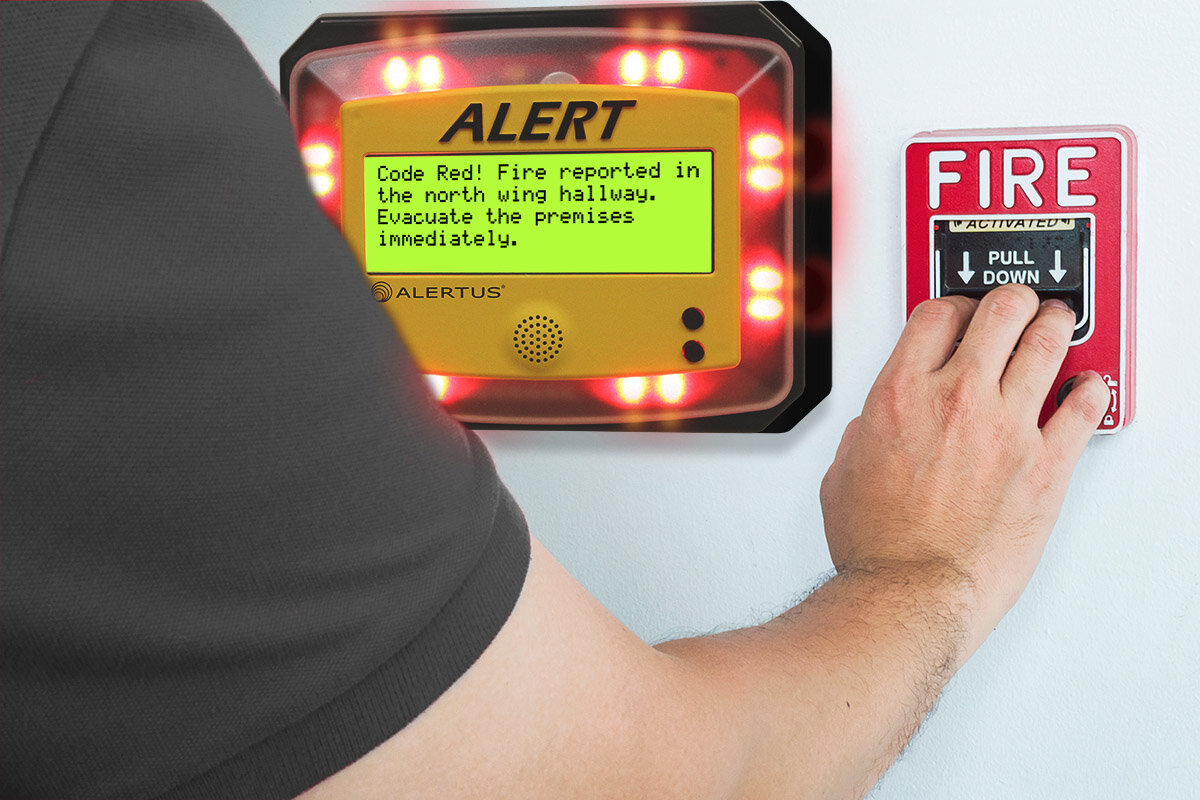Best Practices for a Fire Emergency
By Stephanie Osorno, Marketing Copywriter at Alertus Technologies
While Emergency Preparedness Month has come to a close, effective crisis preparation and communication is a year-long mission.
Throughout the month of September, we’ve been diving into some of the most common emergencies — severe weather, emergency evacuation, emergency lockdown, and fire — in a series of webinars and articles. In this final Emergency Preparedness article, we’re tackling best practices for creating a successful fire prevention protocol and action plan.
Take a look at some of the steps your organization can take to better prepare for fire emergencies.
Discuss Different Fire Scenarios
It’s important to play out all the potential fire emergency situations within your organization. Organizational fires may seem like a rare occurrence, but according to The National Fire Protection Association, a whooping 3,340 office building fires happened between 2007- 2011. These fires have led to an average of 4 deaths, 44 injuries, and $112 million in property damage.
Here are some questions to consider during your fire preparation process:
Where in this organization is a fire likely to occur?
Are there specific rooms with more electrical, lighting, or heating equipment than others?
What might cause the fire?
What are some in-office policies we could put in place to help prevent this fire emergency?
Keep in mind that the more you brainstorm and plan ahead of time, the more prepared you and your team will be in the event of a fire.
Develop a Fire Emergency Plan
The Occupational Safety & Health Administration (OSHA) legally requires organizations, including schools, businesses, healthcare systems, and government facilities, to have an emergency plan in place for critical events like fires. With a better understanding of your organization’s fire threats, you can begin to develop a suitable plan for fire emergencies.
Mass Notification System
A critical component of your fire emergency plan should include a comprehensive mass notification system, such as the Alertus System, with the flexibility and capability to quickly reach everyone during a fire. The Alertus System can integrate with existing communication systems to create a rapid, seamless response for fires — or any other emergency situation. Remember, your remote workers will also need to be notified about the fire even if they may not be directly affected.
Fire Warden
Many organizations often appoint a Fire Warden to lead the charge during a fire. This person will be responsible for a variety of duties, such as activating the mass notification system, calling the fire department, helping everyone to evacuate, and conducting a headcount post evacuation.
Escape Routes
Make sure to map out escape routes for your employees, staff, students, and visitors to follow in the event of a fire. The last thing you want is everyone to scramble for safety during an already high-stress situation. You can opt to write out the routes and post them in high-visibility areas to heighten awareness.
Post Fire Procedure
In addition to escape routes, your organization should have a designated safe location for outside evacuation. This is the area where your Fire Warden will be able to account for all individuals in the building.
Follow the Appropriate Fire Mandates and Codes
Organizations, both large and small, need to follow specific fire prevention mandates and codes. These regulations help ensure your employees and staff can safely evacuate in the event of a fire. For example, the NFPA 72, or the National Fire Alarm and Signaling Code, is designed to evaluate the application, installation, location, performance, and maintenance of fire alarm and emergency communications systems.
The Alertus System is compliant with NFPA 72 and can process many different types of fire panel codes to send a variety of predefined emergency alerts. Alertus’ Fire Alarm Interface can also monitor your fire panel system to both activate and distribute emergency alerts.
Conduct Fire Drills
Your fire emergency plan cannot be put into action without regular fire drills and training. To avoid panic and confusion, your employees and staff will need to be properly educated on what to do in the event of a fire.
Fire drills are a good time to review escape routes, emergency alerting devices and how to use them, and post evacuation protocol. They will also give your organization an opportunity to test the effectiveness of your mass notification system. We recommend conducting fire drills every month or quarterly.
With ample preparation, a strong fire emergency plan, and regular training and fire drills, you’ll increase your chances of keeping everyone safe and maintaining business continuity during a fire. To learn more about preparing for fire emergencies, check out our webinar: Prepare Your Organization for a Fire Emergency with Alertus.
Miss any of our Emergency Preparedness blogs this month? Check them out below.


